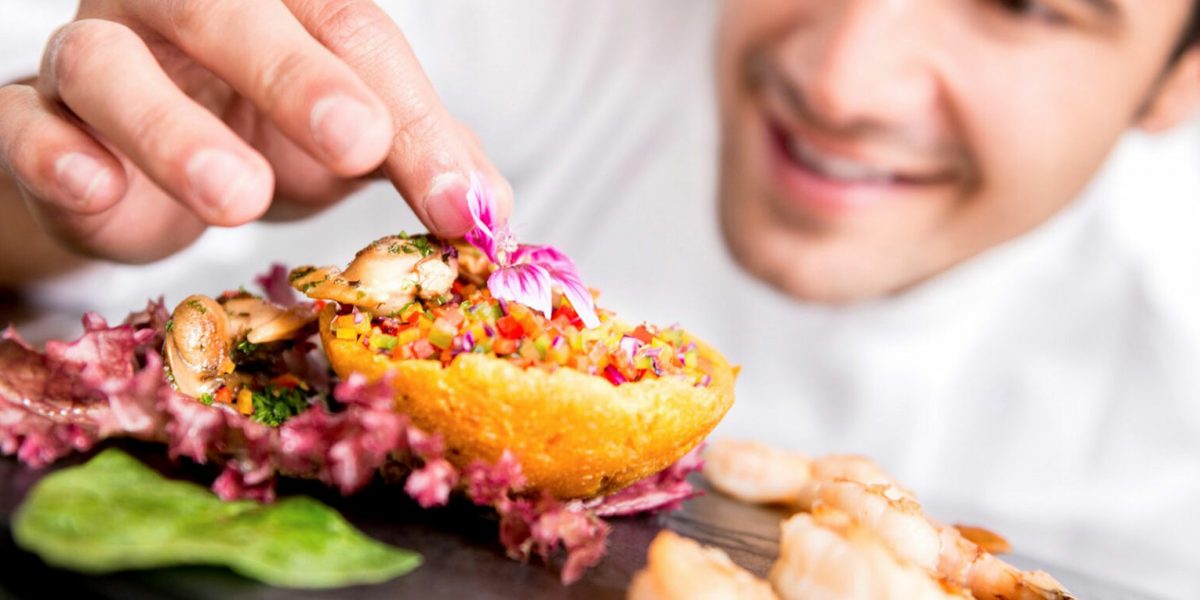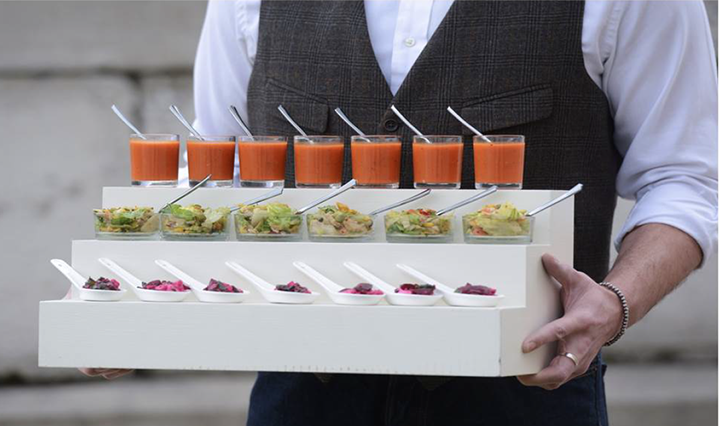
The Art of Food Presentation:
Tips for Stunning Plating
In the world of culinary artistry, it’s not just about how a dish tastes; it’s also about how it looks. Beautifully presented food not only tantalizes the taste buds but also appeals to the eyes, making the dining experience truly unforgettable. Whether you’re a professional chef, an aspiring home cook, or someone interested in the world of catering, mastering the art of food presentation is essential. Here, we’ll share expert advice on how to create visually appealing dishes that will leave a lasting impression on your guests.

- Start with the Right Canvas: Just as a painter begins with a blank canvas, your choice of plate or serving platter is your starting point. Select plates that complement the colours and styles of your dishes. Clean, simple, and white plates are often a safe and elegant choice, allowing the food to take centre stage.
- Balance and Composition: Achieving balance and composition is key to a visually pleasing dish. Consider the placement of each element on the plate. Aim for symmetry, asymmetry, or a harmonious combination of both, depending on your intended style.
- Colour Contrast: Use a variety of colours to create an appealing contrast. Incorporate vibrant vegetables, fresh herbs, and colorful garnishes to add visual interest. A pop of colour can make a dish look more appetizing.
- Height and Layering: Experiment with height and layering to add depth and dimension to your plate. Elevate certain elements of the dish to create visual interest. This can be achieved through stacking, layering, or using edible props like microgreens.
- Negative Space: Negative space, the empty area on the plate, is just as important as the food itself. Use it strategically to highlight your dish. Don’t overcrowd the plate; leave some room for the eyes to breathe.
- Texture and Surface: Incorporate a variety of textures, such as crispy, creamy, or crunchy, to provide sensory stimulation. Texture adds a tactile dimension to the visual experience.
- The Rule of Odds: When placing garnishes or components on the plate, work with odd numbers. Odd groupings are often perceived as more visually appealing than even ones.
- Edible Garnishes: Garnishes should not only be visually appealing but also edible and complementary to the dish. Fresh herbs, microgreens, edible flowers, and citrus zest are great options.
- Sauces and Drizzles: Master the art of sauce drizzling. Use a squeeze bottle or a small spoon to create elegant and precise designs. Practice different techniques like zigzags, dots, and swirls.
- Attention to Details: Pay attention to the smallest details, like wiping the rim of the plate for a clean presentation, and ensuring that all components are perfectly cooked and arranged.
- Test and Experiment: Don’t be afraid to experiment with plating techniques. Try different arrangements and styles to discover what works best for your particular dishes.
- Practice Makes Perfect: Plating is a skill that improves with practice. Take the time to practice your plating techniques, and don’t be discouraged by initial attempts that may not meet your standards.
Remember that while stunning plating is important, it should always enhance the overall dining experience and not compromise the taste and quality of the food. Strive for a perfect balance between visual appeal and flavour to create truly memorable dishes. With dedication and a creative eye, you can transform every meal into a work of art.
If you need any assistance, please call: 9445668787 or Contact Us